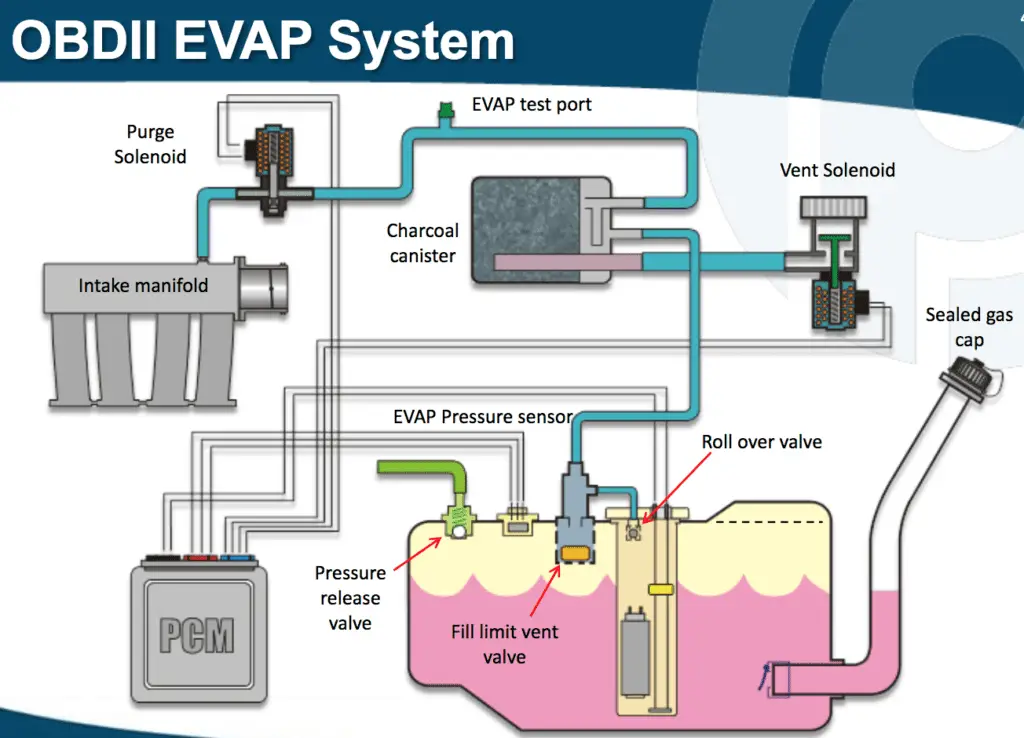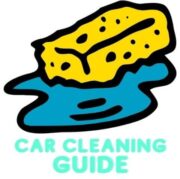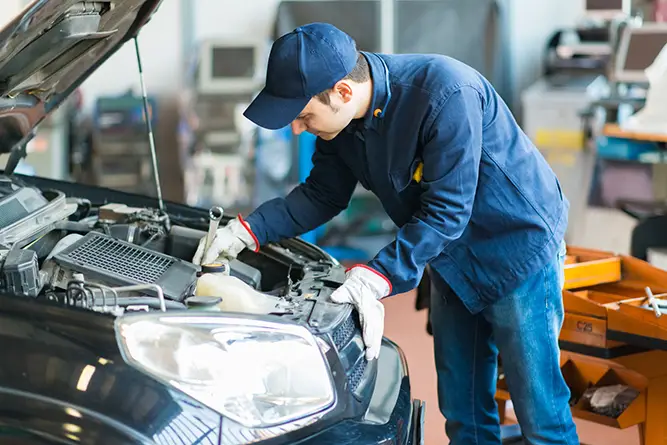Last Updated on July 6, 2023 by Chase Manhattan
While driving your car with a check engine light or some other nuisance – at least for a short period of time – is relatively accepted, I would advise you against doing this most of the time. In most cases, driving with any kind of mechanical fault will not be an immediate issue but will certainly expedite any further issues that can develop down the line.
Keep reading to understand what exactly happens when you’re driving with a bad purge valve, the symptoms & signs, and what to do when you notice it.
Edited and vetted by:
- How to Clean Car Carpets Quick and Easy - July 10, 2024
- Can You Touch Up Clear Coat? Yes and No (Here’s Why) - November 25, 2023
- How To Wax A Car By Hand: A Comprehensive Guide - November 14, 2023
Quick Navigation
What Happens When A Purge Valve Goes Bad?
When a purge valve goes bad, it can cause a variety of problems for your vehicle. The purge valve is responsible for regulating the flow of fuel vapors from the fuel tank to the engine. If it fails, it can cause a decrease in fuel efficiency, rough idling, and even stalling.
Additionally, a bad purge valve can cause the check engine light to come on, which can be frustrating and costly to diagnose and repair. If your check engine light is on, you will be unable to pass emissions tests in most states.
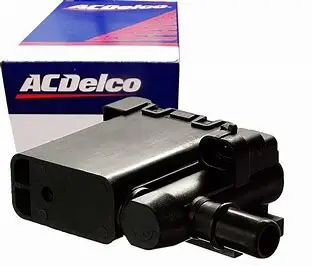
How Does an Evap Canister Purge Valve Work?
An evap purge valve works by controlling the flow of fuel vapors from the fuel tank to the engine. When the engine is running, the evap purge valve opens and allows the fuel vapors to be drawn into the engine from the charcoal canister.
This process helps to reduce harmful emissions and improve fuel efficiency. Without an evap purge valve, fuel vapors would escape into the atmosphere, contributing to air pollution and wasting precious fuel.
What Is A Charcoal Canister?
A charcoal canister works by trapping and storing fuel vapors that are produced in the fuel system. The canister contains activated charcoal, which absorbs the fuel vapors and prevents them from escaping into the atmosphere.
When the engine is running, the canister releases the stored vapors into the engine’s intake manifold through the purge valve, where they are burned. This process helps to reduce emissions and improve air quality.
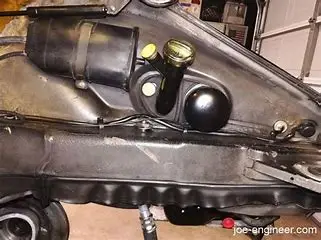
Causes of A Bad Purge Valve
faulty engine control unit (ECU)
An ECU, or engine control unit, is a critical electrical component in modern cars that controls various systems, including the purge valve. A faulty ECU can cause a bad purge valve, leading to a host of problems for your car.
When the ECU fails to send the correct signals to the purge valve, it can cause the valve to malfunction and fail to open or close properly. This can result in a buildup of pressure in the fuel tank, leading to fuel leaks, vacuum leaks, and even fires.
Additionally, a bad purge valve can cause your car’s emissions system to fail, resulting in increased pollution and potential fines from regulatory agencies along with the inability to pass an emissions test.
damaged or faulty wiring and electrical connector
Damaged wiring or connectors can cause faulty purge valve because the cars engine control unit will be unable to correctly communicate with the emission control system. This means that the purge valve will be unable to vent the charcoal canister, leading to a buildup of fuel vapors and the symptoms of a bad purge valve.
vacuum leaks
When a vacuum leak occurs near the purge valve, it can create symptoms that are similar to those of a faulty purge valve. This is because the purge valve relies on vacuum pressure to function properly.
If there is a leak in the vacuum system, it can disrupt the flow of air and cause the purge valve to malfunction. This is most often caused by a broken or disconnected vacuum line.
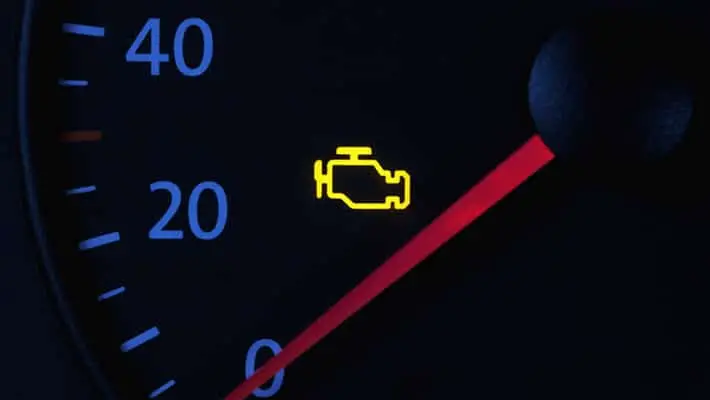
What Are The Symptoms of A Faulty Purge Valve?
If your purge valve is stuck open or closed, the flow of fuel through the fuel system is disrupted. This can lead to a number of fuel and performance related issues. However, it’s advisable to test the purge valve before taking any action. Here are the symptoms of a failing purge valve:
reduced fuel economy
A bad purge valve can have a significant impact on your vehicle’s fuel efficiency. This is because the purge valve is responsible for regulating the flow of fuel vapor from the charcoal canister to the engine. If the valve is faulty, it can cause an excessive amount of fuel vapor to be released into the engine, which can lead to a rich fuel mixture and decreased fuel economy.
the engine has a rough idle or stalls completely
With a bad purge valve, you will experience rough idling or stalling of your car. When the flow of fuel is disrupted during the internal combustion process, this creates a condition known as a misfire. A misfire is caused when there is either not enough fuel when the purge valve is stuck closed, or too much fuel in the case the purge valve is stuck open.
your check engine light is illuminated
When your canister purge valve fails, your engine control unit (ECU) will illuminate your check engine light to let you know there is a problem if you’re unsure about the symptoms of a bad vapor canister purge valve.
your car has difficulty starting
As we’ve discussed, the evap system and the purge valve are important parts of the fuel system. When the fuel is unable to flow freely, the car’s engine will struggle to start because it will not have enough fuel.
A car engine can also have too much fuel which will also create a hard start scenario. You can identify this by checking to see if the engine smells like excess fuel vapors.
Otherwise, I recommend watching this video for a hands-on approach to identify the symptoms of a bad purge valve.
Can You Drive With A Bad Purge Valve?
Yes, you can drive with a bad purge valve but I would not recommend it for extended periods of time. As we discussed, driving with a bad purge valve will expose your car to adverse conditions like poor engine performance and reduced fuel efficiency.
Keep in mind that your car was designed to run with a particular amount of fuel, so operating outside of this range will prematurely wear your car in extreme circumstances. For example, fuel assists in cooling the car during the internal combustion process, if you don’t have enough fuel being distributed to the engine you may run the risk of overheating the car.
On the other hand, if you have too much fuel during the internal combustion process, you run the risk of fouling your spark plugs which will lead to further reduced engine performance and the need for a premature tune up.
How Long Can You Drive With A Bad Purge Valve?
How long you drive with a bad purge valve depends solely on your risk tolerance. As we just discussed, a bad purge valve will expose your car to numerous adverse conditions that are not immediately urgent, but will present other issues down the road should they go unaddressed.
What Is The Purge Valve Replacement Cost?
The replacement cost for a faulty canister purge valve will vary depending on if you do it yourself or take it to a mechanic. The cost for a new purge valve alone is typically under $100 dollars, but taking it to a mechanic will often involve other charges like labor costs. If taking it to a mechanic, I would advise you to expect to spend $200-$300 dollars to replace your failing canister purge valve.
How To Replace A Bad Purge Valve Yourself
Often times as car owners we’d like to avoid the pricey labor costs associated with taking our car to a mechanic. Fortunately, the replacement cost for a new purge valve is relatively cheap. Replacing a bad purge valve is a relatively simple process that can be done at home with just a few tools and steps. Here are the steps to replacing a bad purge valve:
- locate the purge valve on your car’s engine.
- disconnect the electrical connector from the purge solenoid
- disconnect the vacuum hose from the purge valve
- use a wrench to remove the valve from its mounting bracket
- replace the bad purge valve with a new one
- reconnect the electrical connector to the purge solenoid
- reconnect the vacuum hose
- test the new purge valve to ensure that the issue has been resolved
What Is A Purge Valve Solenoid?
The purge valve solenoid is the electrical component that receives signals from your car’s ECU that determines when the purge valve is open or closed. In basic terms, the purge valves solenoid is either on or off depending on if it’s receiving electricity or not.
[How To Clean A Purge Solenoid Valve]
It’s important for you to know that often times the purge solenoid will cause the purge valve to act up; it’s not always a bad purge valve that’s giving you issues. The symptoms of a bad purge valve, and a bad purge solenoid, present themselves in the same way.
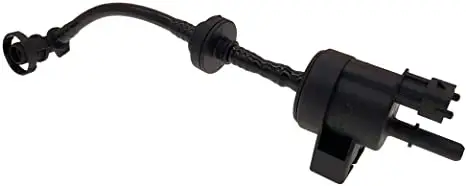
FAQs and Related Questions
What is an EVAP System and How Does It Work?
Also known as the evaporative emission control system, the evap system is a crucial component in modern vehicles that helps to reduce harmful emissions. The evap system works by capturing and storing fuel vapors that are produced in the fuel tank and engine.
These vapors are then directed to a charcoal canister where they are stored until the engine is started. Once the engine is running, the vapors are drawn into the engine and burned off, reducing the expression of toxic hydrocarbons.
Where is the EVAP Purge Valve Located?
Usually the evap purge valve is located on the charcoal canister, or near the fuel tank. Most often, the charcoal canister is located near the corner of the engine bay away from most other critical components. In some cases, the EVAP canister may be bypassed entirely.
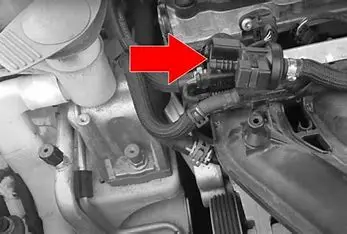
Can A Bad Purge Valve Cause Shifting Problems?
A bad evap purge valve should not affecting shifting at all. It will affect the car’s performance elsewhere but since the purge valve is strictly related to the fuel system it will not affect the transmission at all.
How To Test A Bad Purge Valve Solenoid?
The simplest way to test a bad purge solenoid is by using a multimeter to test continuity. There is a coil inside the purge solenoid which allows electricity to flow across it, which activates the purge valve when necessary. By checking continuity you’re verifying that the coil is still intact inside of the purge solenoid.
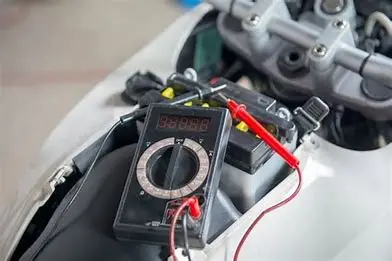
What Happens If You Don’t Fix Your Purge Valve?
If you don’t fix your purge valve, you will experience:
- permanently illuminated check engine light
- inability to pass emissions test
- continuous poor engine performance
- reduced gas mileage
- continuous rough idle
- potential overheating
- fouled spark plugs
Will Driving With A Bad Purge Valve Damage My Car?
Driving with a bad purge valve will not immediately damage your car, but it will decrease it’s efficiency and performance immediately, and more severely over time. A faulty canister purge valve allows either too much fuel to escape the evap system, or by starving your engine of fuel during the internal combustion process.
How Does The Evap System Work?
As we’ve discussed, the Evap system works to regulate the flow of fuel throughout the fuel system while also reducing the emissions that are released into the air. To get a better understanding of this system, reference the evap system diagram below:
